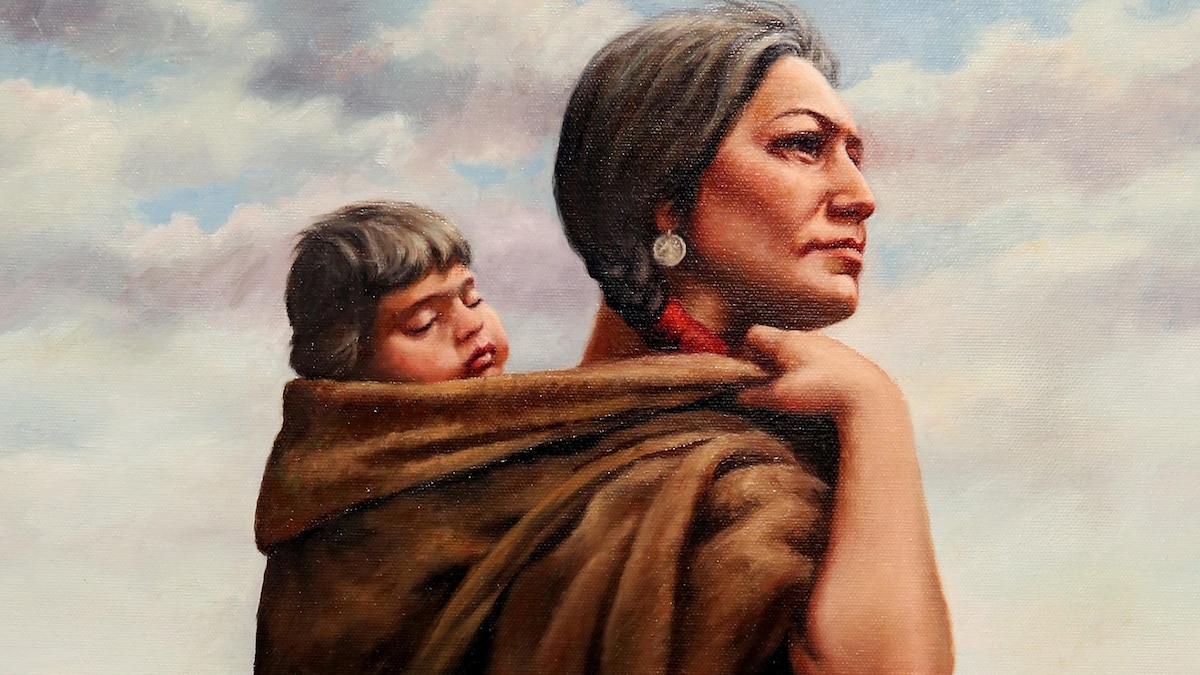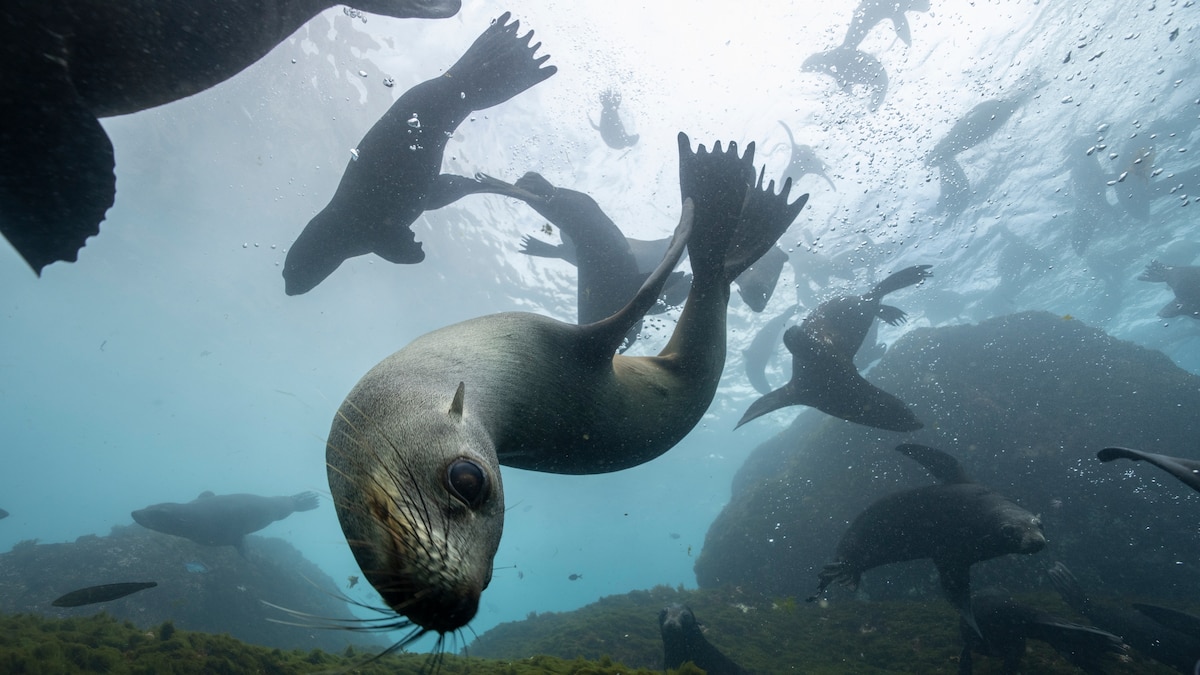Now Reading: Who was Sacagawea? Here’s the real story of her critical role in U.S. exploration
-
01
Who was Sacagawea? Here’s the real story of her critical role in U.S. exploration
Who was Sacagawea? Here’s the real story of her critical role in U.S. exploration

Of all the figures that emerged from the American West, none may be so wrapped in mythology as Sacagawea. When she joined Meriwether Lewis and William Clark’s infamous expedition west, she was just a teenager and a new mother. However, Sacagawea emerged as an icon of the New World.
Today, her name is synonymous with a period characterized by rapid westward expansion at the great expense of the Tribal Nations who stewarded the land since time immemorial. Though her brief life burns brightly in the American consciousness, here’s what is known about the young Native American woman who accompanied the famed explorers on the journey that would change America forever.
Who was Sacagawea?
It’s estimated that Sacagawea was born in the late 1780s, however, not much is known of her early life before she met Lewis and Clark at age 16.
As a citizen of the Lemhi Shoshone Tribe, Sacagawea would have grown up in what is now Idaho, along the Salmon River. In Sacagawea: A Biography, historian and author April Summitt writes that the Lemhi Shoshone people subsisted on the salmon abundant in its waters. As a young woman, she would have contributed to the daily tasks essential for survival: preparing and drying fish, curing animal skins, harvesting wild berries, seeds and root vegetables, and even building shelter.
Sacagawea’s life changed forever when she was abducted at around 10 years old. As the Lemhi Shoshone were camped near what is now Three Forks, Montana, the Hidatsa Tribe attacked. The conflict culminated in the capture of a group of young Shoshone women, including Sacagawea. The captives were taken to the Hidatsa villages near what is now Bismarck, North Dakota.
Sacagawea lived as a captive of the Hidatsa for three years until she married a 38-year-old French Canadian fur trader, Toussaint Charbonneau, who lived among the tribe.
Sacagawea’s forced marriage
Charbonneau was already married to another Shoshone woman when he took Sacagawea as his wife in 1804. Historical accounts offer a dark glimpse of the man with whom Sacagawea would spend much of her young life. In 1795 while working for fur trading business, North West Company, he was discovered raping a young Indian woman, according to journal’s kept by the company’s clerk.
Not much is known about how their marriage came to be. However, we do know that Sacagawea had little agency over her fate. A 2002 Los Angeles Times article reported that Charbonneau “won” her as his wife in a gambling bet. Others say he bought her in exchange for goods. In Sacagawea: A Biography, historian and author April Summitt writes that Charbonneau likely exchanged horses or other goods with the Hidatsa for Sacagawea’s hand.
Others point to the union as a means of forging an alliance between Native communities and settlers.
Historically, matrimony between Native women and a European man was not one of romance. For European men in the fur trade, marrying into a Tribal Nation meant gaining insider status in what could otherwise be a hostile relationship. A Native wife could interpret for their husbands and tribes, forge deals and alliances, and open access to trade routes. For tribes, those alliances might keep them safe from destruction at the hands of colonizers or offer political mobility in a swiftly changing world.
Debra Magpie Earling, a member of the Bitterroot Salish tribe and author of The Lost Journals of Sacagawea, a fictionalized account of Sacagawea’s life based on historical documents, emphasizes that the reality of the arraignment was likely more sinister.
“There are some historians who claim that Sacagawea was sold, that Charbonneau was trying to sell Sacagawea to other men,” Earling said.
The Louisiana Purchase’s influence on Indigenous life
Sacagawea’s life took place against the backdrop of a quickly evolving geopolitical landscape brought on by the Louisiana Purchase in 1803. The largest land deal in American history, the United States doubled in size when it purchased 820,000 square miles from France—a swath of land that would become 15 states spanning from Louisiana to Montana.
The Louisiana Purchase also opened the West to a deluge of settlers spurred on by Manifest Destiny—the belief that it was their divine right to expand America beyond the vein of the Mississippi River. Settlers and indigenous tribe’s clashed, the former fought for what they thought was divinely theirs, and the latter held their ground to protect their homeland and lifeways.
In just a few decades, the Native tribes that stewarded western land would be forced to the confines of reservations created by the U.S. government and subject to sanctimoniously cruel campaigns to rid the country of their peoples and memory. The Indian Removal Act of 1830 saw the U.S. military forcefully marching Native people great distances away from their homelands, resulting in the deaths of thousands by starvation, disease, and exposure.
(Read more on how North America’s Native nations are reasserting their sovereignty.)
As settlers displaced Native communities, Sacagawea’s fortunes changed. In November 1804, while she was six months pregnant with her first child, Lewis and Clark arrived at the Hidasta settlement to wait out the winter.
President Thomas Jefferson had commissioned the two men to lead an expedition into America’s vast new territory acquired in the Louisiana Purchase. The expedition aimed to survey the land, forge relationships with various tribes, and collect information about new species of plants and animals.
You May Also Like
Lewis and Clark recruited Charbonneau to their expedition, dubbed The Corps of Discovery, for his ability to speak French and some Hidatsa. The journey would span from the northern plains of modern-day North Dakota, through the Rocky Mountains and to the Pacific Ocean.
The fur trader’s young wife quickly piqued their interest. Sacagawea was fluent in both Hidasta and Shoshone, an indispensable asset to a team of explorers venturing into Native American territories where language barriers could impede relations and even lead to deadly violence.

Sacagawea, a member of the Lewis and Clark Expedition, is retrieving supplies after one of the boats keeled over. Sacagawea was vital to the expedition as she translated and guided the group from the Mississippi River to the Pacific Coast.
Painting by Rob Wood, Wood Ronsaville Harlin, Inc. USA, Bridgeman Images
Sacagawea’s influence in the Lewis and Clark expedition
On April 7, 1805, two months after giving birth to her son Jean Baptiste Charbonneau, Sacagawea, her new baby, and her husband began the journey west with Lewis and Clark. She was the youngest member and only woman in the group, carrying her baby on a cradleboard on her back, in her culture’s tradition.
While Lewis and Clark’s journals mention Sacagawea less than two dozen times, many entries contain clues that may tell us what her life was like on the journey.
In an entry on August 14, 1805, Clark wrote that Charbonneau struck her during dinner, for which he was reprimanded. At times, she and her baby slept in Lewis and Clark’s tent.
A month into the journey, the explorers were canoeing down a tributary of the Missouri River when the boats capsized, spilling people and supplies into the roaring waters. Sacagawea remained calm while gathering essential papers, books, instruments, medicines, and provisions that would have otherwise been lost to the river. The act inspired Lewis and Clark to name the river after her.
Sacagawea’s language skills proved essential when it came time for the expedition to negotiate the purchase of horses from a group of Shoshone near the Lemhi Pass in modern-day Idaho. While discussing the purchase with the group’s leader, she discovered it was, in fact, her brother, Cameahwait. Clark wrote in his journal that the reunion was clearly emotional, and the typically stoic young Shoshone woman expressed joy upon meeting her long-lost brother.
Sacagawea used knowledge culled from her Native culture to the benefit of the group, harvesting edible plants for food and medicinal purposes and making clothing and footwear. She also read the landmarks in the vast landscape, advising the party on the best route to return east.
Her contributions elevated her status in the group. By the time the voyage reached the Pacific Coast in November 1805, she was allowed agency that was otherwise not afforded to a woman. The captains allowed her to join a scouting party to see the remains of a whale beached on the shore and Clark’s journals note that she even had a vote when it came time to decide where to set up camp to wait out the winter.
While the captains ultimately chose not to settle in the area she suggested—where wapato, or root vegetables, were plentiful—casting her vote as a lone woman among men would later inspire the women’s suffrage movement to adopt her as a symbol.
Sacagawea’s life after the expedition
Upon returning to the Hidatsa settlement in August 1806, Charbonneau was paid $500.33 and 320 acres of land for his role in the expedition. Sacagawea received no compensation from Lewis and Clark.
Little is known about Sacagawea’s life after the expedition.
In 1811, Sacagawea and Charbonneau took Clark up on his offer to oversee their son’s education in St. Louis, after the explorer was appointed the superintendent of Indian Affairs. Meanwhile, the couple worked for the Missouri Fur Company, and it’s believed Sacagawea gave birth to a girl named Lisette in 1812.
Records point to Sacagawea’s death from illness later that year; but that might not be the end of her story. In 1925, the U.S. government directed Sioux physician Charles Eastman to seek out where Sacagawea was buried so a monument could be erected in her honor. After interviewing tribes in North Dakota and Wyoming, he came to believe that she left Charbonneau to marry into the Comanche tribe, and lived a long life well into her 80s, passing away in 1884.
Sacagawea’s legacy in the United States
Today, Sacagawea’s image is immortalized on the U.S. Golden Dollar coin, with her face peering over her shoulder as her baby is nestled safely against her back. First issued in the year 2000, the coin sought to honor her contributions to American history and was created in collaboration with Native American communities. The image seeks to remind us of the tenacity of the young Native woman as an explorer in her own right, and her strength as a mother.
From the waters from which she saved crucial records and supplies to Sacagawea Peak in Oregon, her impact on the country is remembered. An effigy in Salmon, Idaho—the homeland of her people—also stands in her honor.
“I think America has told itself this tale, made this myth of this young Indian woman who came along and helped the explorers as a false justification for the stealing of native lands,” Earling said. “She isn’t mentioned very much [in Lewis and Clark’s journals], but her presence is so powerful.”
As Clark noted in a letter after the expedition, Sacagawea deserved “a greater reward for her attention and services … than we had in our power to give her.”























